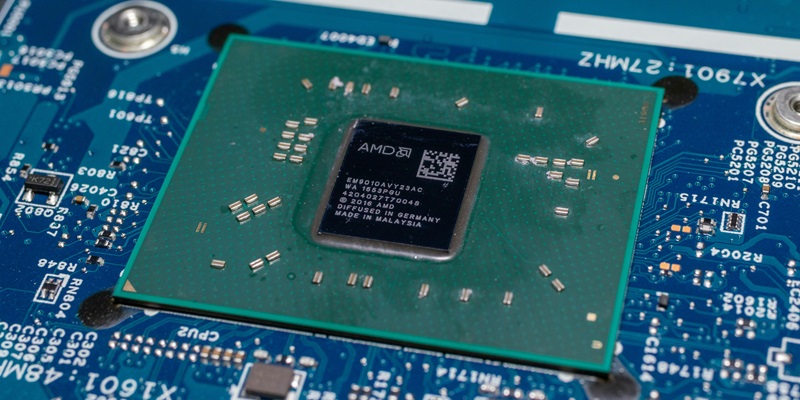AMD’s highly anticipated release of its Zen 5 CPUs in August was initially expected to be a significant hit, particularly as Intel continued to grapple with instability issues in its Raptor Lake CPUs. However, rather than receiving universally positive feedback, the launch encountered mixed reviews and considerable criticism. Analysts, reviewers, and consumers expressed confusion and disappointment regarding the inconsistent performance results initially reported.
Performance Discrepancies and Initial Reactions
Reviewer Confusion and Consumer Disappointment
From the outset, performance results for AMD’s Zen 5 CPUs seemed inconsistent, leaving both reviewers and consumers in a state of confusion and dissatisfaction. This unexpected outcome was particularly disheartening given the favorable expectations surrounding the product release. Initial assessments highlighted a range of performance outcomes that varied drastically, leading many to question the reliability of AMD’s claims regarding Zen 5’s capabilities.
To address these discrepancies, AMD published a detailed blog post attempting to explain the complexities involved in accurately gauging CPU performance. It emphasized that the PC ecosystem is extraordinarily complex, involving a multitude of hardware variations and an ever-expanding library of both new and old games. Despite their internal testing showing positive generational improvements for Zen 5 over its predecessor Zen 4—and in some cases, over Intel’s current CPUs—the external reviews painted a less optimistic picture. This divergence in reported outcomes especially affected gaming performance, where the stakes are notably high for many consumers.
Diverse Testing Conditions
One significant factor contributing to the mixed reviews was the diverse range of testing conditions under which the CPUs were evaluated. AMD pointed out that their internal metrics were based on specific conditions that external reviewers did not uniformly replicate. For instance, AMD’s internal tests for Intel systems used a baseline power profile and DDR5-6000 memory, which is comparatively slower than some of the advanced memory kits used by external reviewers. Additionally, the inclusion of Windows Virtualization-based Security (VBS) during AMD’s tests affected gaming performance, a setting not consistently activated by all reviewers.
Moreover, AMD highlighted that their automated testing utilized an "Admin mode" in Windows 11, which was initially unavailable to external reviewers. This mode, AMD argued, optimized Zen 5’s prediction pathways, contributing to the discrepancies in gaming performance results. In light of these variations, the company attempted to align the performance figures, revising the expected gaming performance uplift to zero, or "parity" with Intel’s CPUs, and adjusting other metrics downward to more conservative estimates.
Performance Revisions and Future Updates
Gaming and Productivity Adjustments
In an effort to bring clarity to the performance discrepancies, AMD revised its performance metrics post-launch. Initially, the company had projected a 6% gaming performance uplift over Intel’s CPUs, which was subsequently adjusted to zero percent, or "parity." This adjustment took into account the diverse testing conditions and the impact of Admin mode, which reviewers could not initially access. When compared directly to Zen 4, the uplift in 1080p gaming saw a reduction from an expected 9% to a range of 5-8%, reflecting the varied outcomes reported by external testers.
Apart from gaming, productivity applications showed a more definitive improvement. The company indicated a consistent 10% performance boost in this category, which was largely well-received given the practical implications for many users. Furthermore, AMD claimed around a 25% boost in AI applications, affirming one area where the Zen 5 CPUs demonstrated clear advancements. Despite these encouraging metrics, the overall reaction from both reviewers and consumers was one of tempered enthusiasm, as expectations had to be recalibrated based on the revised figures.
Admin Mode and Future Prospects
AMD’s much-anticipated release of its Zen 5 CPUs in August was initially predicted to be a massive success, particularly since Intel was still dealing with instability problems in its Raptor Lake CPUs. Many expected AMD to dominate the market and take advantage of Intel’s shortcomings. However, the launch did not go as smoothly as many had hoped. Instead of receiving overwhelmingly positive feedback, the release of Zen 5 received a mix of praise and criticism. Analysts, reviewers, and consumers alike expressed their confusion and disappointment over the inconsistent performance results that were being reported shortly after the launch. Some users experienced top-notch performance, while others found the CPUs falling short of expectations. This disparity led to a whirlwind of debates and discussions within the tech community, with some arguing that the new CPUs were rushed to market without thorough optimization. The mixed reviews have left AMD in a challenging position, as they now have to address these performance inconsistencies to redeem their reputation and maintain consumer trust.

